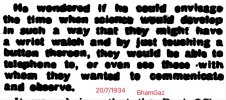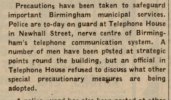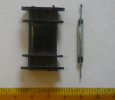cookie273uk
Gone but not forgotten
Radiorails, re post 341, that is the old EAS (east) telephone exchange, later having the 327 all figure code, part of the Birmingham (021) telephone system, I worked for PO telephones 1956 t0 1987, although the last 3 years it was privatised and became BT, one of the reasons why I took early retirement. Eric






